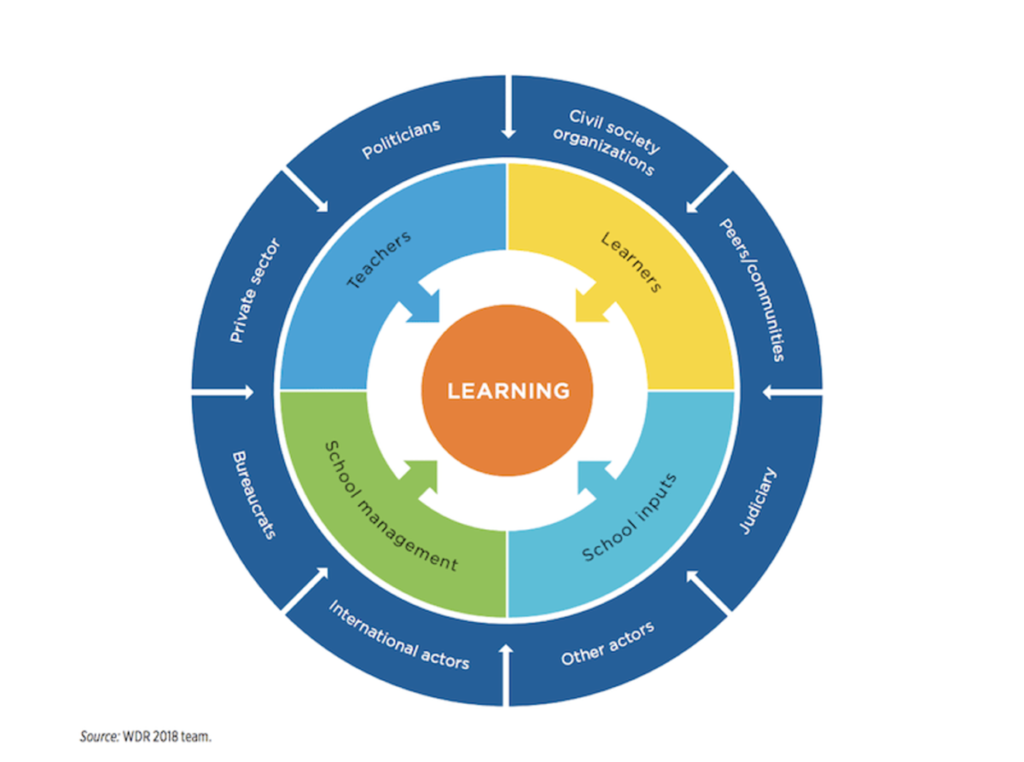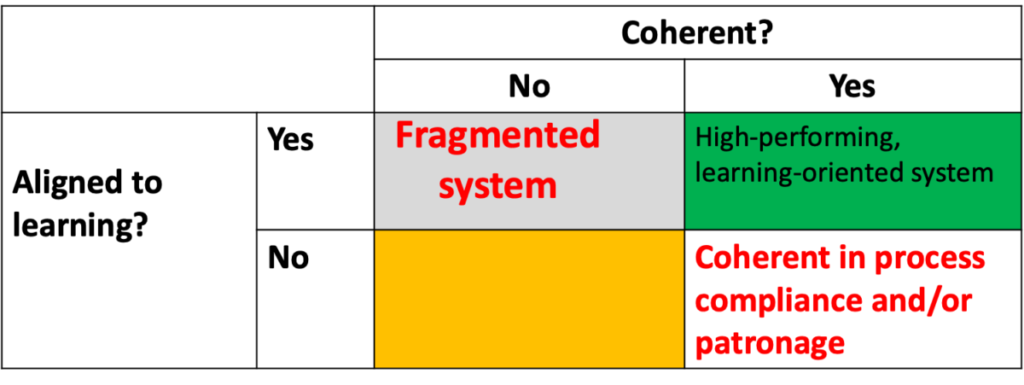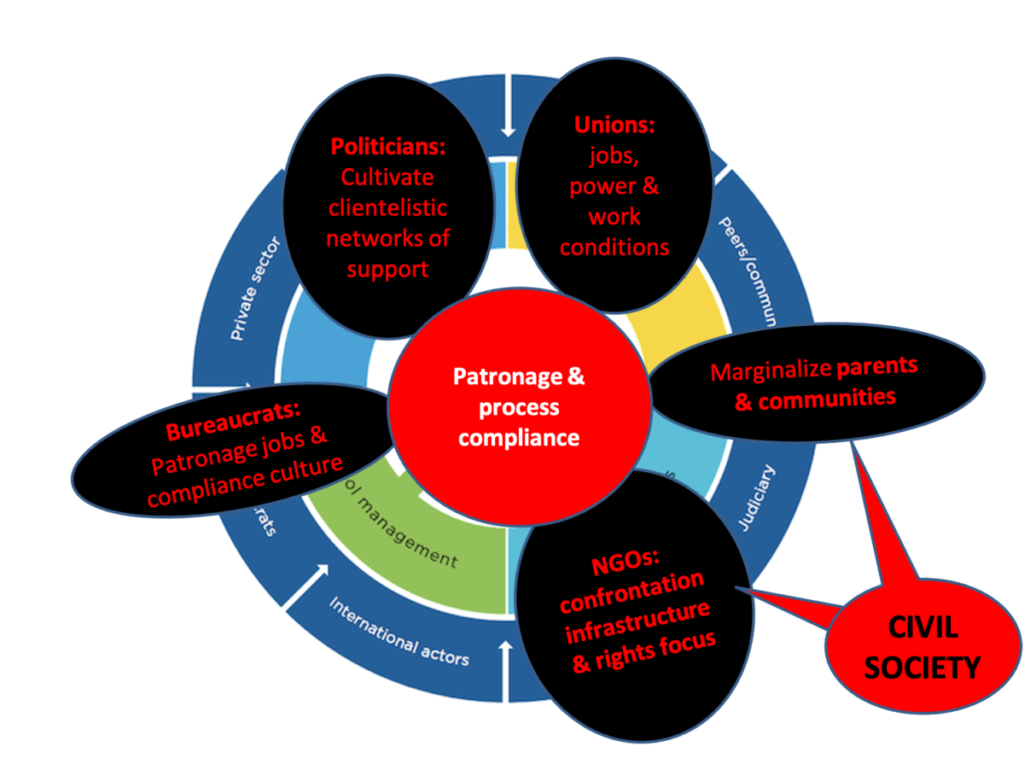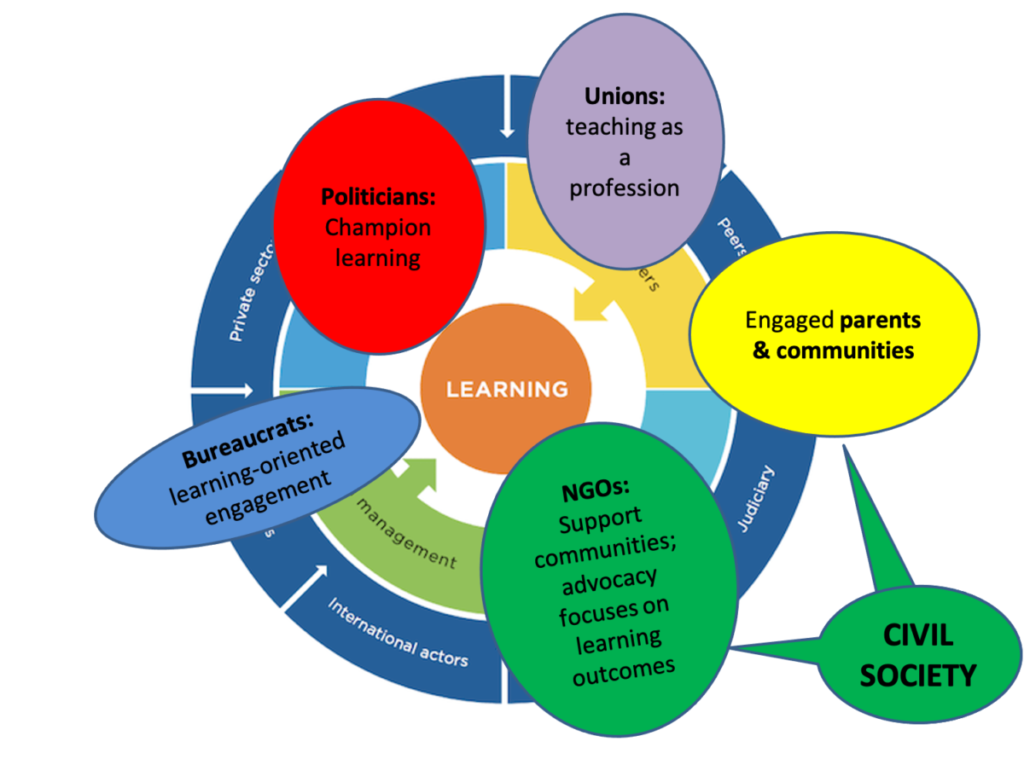Researching the politics of development
Blog

How can civil society help improve learning outcomes?
Professor Brian Levy
Following our first blog on the politics of learning reforms, this article focuses on how different stakeholders interact in an education system and how this shapes learning outcomes. To begin, it’s necessary to distinguish between three ways that different actors can get involved to create change in the context of education reform:
1. Accountability: holding government to account, activism tied to education, which is most commonly tied to increasing access to education. This could focus on building educational infrastructure, combatting corruption, or improving resources so that students have access to textbooks or schools are appropriately staffed.
2. Participation: the active involvement of different stakeholders in the educational process to exert their influence directly, e.g., at school-level, by parents & communities.
3. Promoting and reinforcing ideas: the power and nature of dominant and emerging ideas and ideology around education, e.g., “all for learning”, quantity of access vs. quality of outcomes.
It is useful to add to these a framing from the 2017 World Development Report, which focuses on realising the promise of education to foster widespread development. The diagram below provides a simple summary of the complex puzzle that is education reform, covering different the stakeholders involved and their contribution to learning outcomes:

There are three points to emphasise in the diagram. First, learning – the key outcome of interest – is at the centre. Better learning outcomes should be what all stakeholders are working towards. Second, middle of the concentric circles highlights the crucial drivers of learning outcomes. These drivers tend to be the focus of education sector reform – teachers, learners, school managers, and other inputs shaped by the school. Third, the outer ring highlights the multiple stakeholders that shape what happens in an education system. As you can see, there are a lot of them, which makes the system – and reform to change it – complex.
As such, resolving entrenched barriers to improving learning outcomes is an uphill challenge. With such a large and interdependent system as organising education at a national level, many things that all influence each other need to be changed simultaneously. This is a delicate job can be very hard to change things in a way that improves the ultimate outcomes.
Coherent or fragmented education systems
Looking across educational systems, there are two different types to consider: those that are coherent – organised in a logical, efficient way – and those that are fragmented. In studying these, once their coherence is assessed, we can also determine if they are aligned to improving learning as the core outcome or aligned to something else, such as access or participation.

This framework lends itself to understand what was captured in our research in South Africa, drilling down into two provinces, both of which were problematic in terms of education improvements. Eastern Cape presented fragmentation of the education system. In Western Cape, we saw a different problem: preoccupation with hierarchy of authority and compliance with processes, in the thinking that complying with processes was synonymous with achieving learning objectives.
From establishing the challenges in each problem, the question of how to address these problems arises, and the answers are quite different. If we’re dealing with that bottom left type problem in the matrix – a fragmented system, not aligned to learning – what emerges is the possibility of encouraging pockets of effectiveness, such as strengthening school level participation as a substitute for a dysfunctional bureaucracy that isn’t fixable on its own terms.
When we looked at reform in the South Africa case more widely, we found a formal enabling environment for empowered participation at the school level. A study of in depth school level case studies explored the evidence, showing mixed impact in educational outcomes and distinct determinants in the variation of impact: the nature of the power dynamics at the level of the school and its stakeholders.
Interestingly in terms of creating reform, this raising the possibility of supporting developmental actors at the local level to improve education, rather than taking a top-down approach. This stood in contrast to analysis of the focus of activism, which did not suggest problems lay at the local level.
In Western Cape, we found process compliance and bureaucracy to be the main problem. We looked to the example of Kenya to contrast with this. Kenya has 1/5 the resources of Western Cape, but when controlling for all the other variables, it outperforms the Western Cape education system in terms of educational outcomes, and not because of the quality of bureaucracy.
There are two key features of differentiation that explain this difference. Firstly, educational expectations from the community in Kenya. Students’ exam results are available publicly and there’s an expectation from the community that pupils individually and the school overall performs well.
Secondly, there’s engagement from the community with the school, which provides monitoring, affirming good teacher performance and sanctioning bad performance. This signals the power that Kenya captures from the transformative ideas of community engagement and development through education, the notion of active citizenship and of all for learning, which is deeply rooted in Kenya.
Explaining this with theory
Going back to the theory, lower level dysfunctional equilibrium can be caused by different stakeholders creating barriers to effective learning, with versions of engagement with policy focusing on confrontation, school infrastructure and rights to education.

On the other hand, an equilibrium supportive of learning would include the political and bureaucratic champions who engaged with learning, a situation where unions are engaged with teaching as a profession and where civil society activism, by contrast with the previous example, is centrally focused on learning outcomes, supportive of communities, and supportive of engagement with parents and communities.

